Picture this: You’ve just launched your e-commerce store. But as days turn into weeks, you realize that attracting customers is only half the battle. The real challenge? Keeping them coming back for more.
But how do you achieve this? The answer is Customer Relationship Management (CRM).
You can start by integrating a CRM tool within your e-commerce site that allows you to collect and analyze customer data, send personalized offers, and track each customer’s journey through the sales funnel. This data-driven approach enables you to create targeted, meaningful experiences that keep customers coming back.
Let us dive in and explore top CRM strategies to help you boost your e-commerce engagement and retention efforts, driving growth and profitability for your business.
27 Proven CRM Strategies to Boost E-commerce Engagement and Retention
Now that we understand the importance of customer engagement and retention in e-commerce, let’s explore 27 practical CRM strategies that you can implement to achieve these goals.
Table of Contents:
- Dual pillars of CRM
- Re-ordering customer base
- Multi-Channel marketing
- Automation & personalisation
- Targeted communication
- Providing discounts
- Customer retention
- Singular user identity
- No voucher codes
- Online wallet
- Have great deals & offers
- Improved UI/UX
- User experience
- Build valuable/sticky products
- Big data
- Email marketing automation
- Business automation
- User generated content
- Avoid getting spammed
- Keep relevance
- New attribution model for transaction
- Open rate calculation
- Using right data tool
- Offers for qualified users
- Push notification
- Loyalty program
- Referral program
From having picked up CRM as a function out of the blue back in Jan 2013 to having seen it evolve closely over the last 3 years, thought I’ll summarize my learning in a bunch of bullet points. Hope this is helpful to marketers and start-uppers thinking of an eCommerce CRM/ Retention strategy.
1. Dual pillars of CRM
You have to look at the two CRM work areas “Email marketing and Push Notifications” and “Retention and CLV optimization” distinctly, even if the same team is responsible for both.
2. Re-ordering customer base
Emails/Pushes by themselves won’t be sufficient to impact your cohorts(re-ordering customer base). The funnel drops sharply through Opt-in rates / Open rates / click rates/ conversion rates and doesn’t ultimately offer a huge uplift.
3. Multi-Channel marketing
Going multi-channel (especially using On-site CRM) are crucial, if you really want to have your CRM efforts impact your customer retention. Best-in-class now is to orchestrate multi-channel marketing campaigns across email / push /in-apps/ display re-targeting/ FB custom audience /On-site overlays / on-site banners / SMS – all talking the same language, dealing with the customer as an individual, instead of each channel giving a different message.
Add predictive modeling for customer lifetime value / risk of churn and you have a compelling CRM mechanism that can greatly help retention efforts. Check tools like Optimove.com / Agilone.com.
3.1 This may need a bit of organizational collaboration to end the silos / turf issues between different marketing channel owners. Best you think about it early in your org’s life. You can’t apply the same CPO targets showing display ads to your most and least valuable customers.
3.2 The segments here are floating. The audience of ‘those who placed their first order yesterday’ will have to change every day, while the campaign remains the same. No way you can manage dozens of these floating segments manually.
3.3 The campaign content is also dynamic – you could show the ‘top recommendations for you’ based on your first purchase – similar / complementary products or ‘new arrivals in the brand /category of user preference.’ or something else, depending on your product portfolio.
Check Out – How To Convert Your First-Time Visitors Into Buyers
4. Automation & personalisation
Automation is the only way to do meaningful customer communication. You can never send thousands of personalized messages otherwise. To understand and plan for automation, you need to understand really how data is flowing in your systems, which data is available at the user level and what additional data can be available at the user level to base your campaign on and how this data can translate into a ‘relevant’ customer campaign.
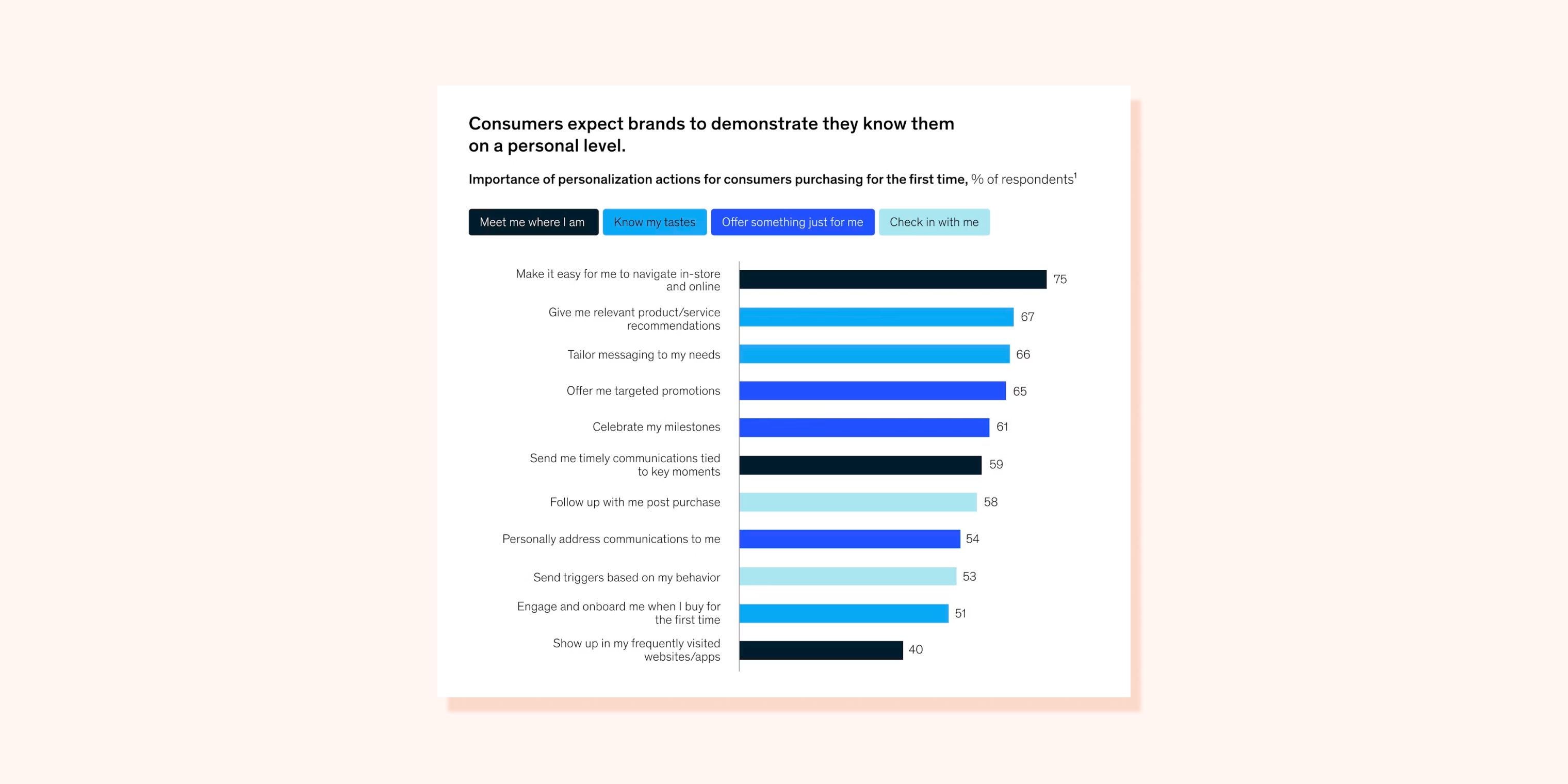
The image above illustrates the importance of various personalization actions for consumers making their first purchase from a brand.
Some key considerations when implementing automation and personalization include:
4.1 Segmenting too finely will leave you with several small fragments of an audience without a clear idea of how to treat them differently on an ongoing basis. Think more concerning increased relevance via personalized content.
4.2. The lowest hanging fruit is to automate is the new user onboarding – right from his sign-up to his placing his first order – educating him about your site / getting him to place his first order. He shouldn’t immediately start getting your regular promotions that are sent to all users. Best if you use dynamic content for ‘promotion-of-the-day’ as a section in the onboarding journey mail.
5. Targeted communication
What a user did (saw / spent time on / searched / abandoned / others) on the site yesterday is way more relevant for the company than what he bought a month ago to target communication to me. The more communication (share of volume) you can move towards ‘triggered/automated’, the better ROI you’ll get.
6. Providing discounts
In slim margin businesses, acquiring a customer via a steep discount, will NEVER generate a positive CLV at customer level. This is the most obvious point that surprisingly seems to be missed by SO many people. A customer with two consecutive orders with steep discounts is extremely unlikely to ever come back without a discount.
7. Customer retention
Your biggest retention problem would be to get the second order. After 3 orders, customers tend to be a lot more likely to repeat further. Funnily, across the businesses I’ve seen – a big chunk of the customers who ever repeat, repeat really close to their first order – same day / within 7 days or max within a month. It’s counter-intuitive for some industries but true. Wallet cashback on the first order is the sanest monetary-incentive route to try for this.
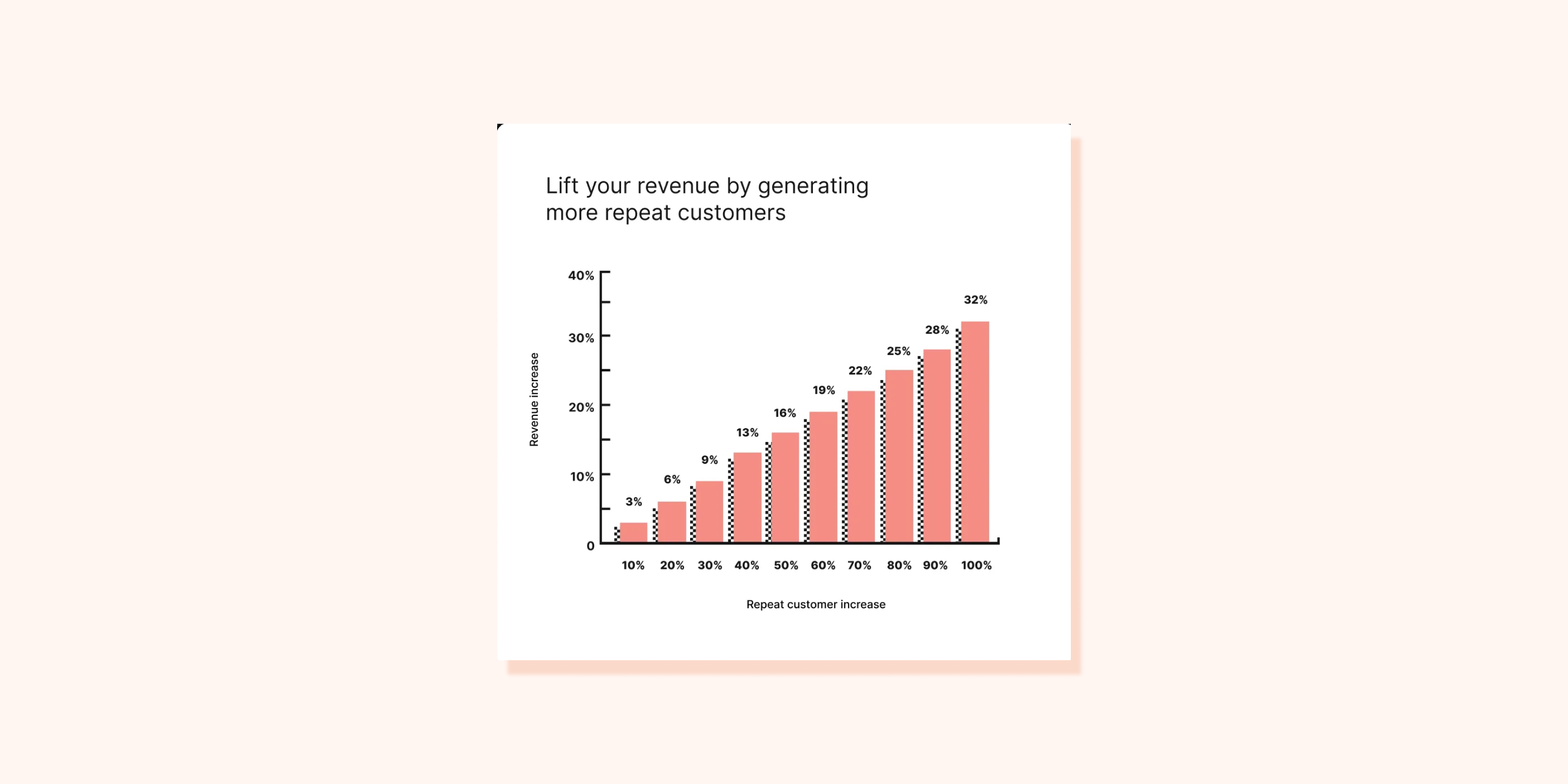
The image above from Gorgias illustrates the powerful impact of increasing your repeat customer base on revenue growth. By focusing on customer retention strategies that encourage just 20% of your customers to make repeat purchases, you can generate up to a 6% lift in revenue. This shows that the focus should be on retention efforts since even small changes can give huge financial gains.
8. Singular user identity
It’s important to set a singular user identity in your system. Unique verified the mobile number was the most straightforward to handle and harder to cheat with. Especially important if you have incentives for first-time customers. Kill the possibility for users to create multiple accounts, and engage with the coupon sites only for customer acquisition.
9. No voucher codes
Kill the concept of voucher codes. As a user, one should see the offer(s) he’s eligible for through the multi-channel campaigns, and then automatically get the offer using a back-end rule engine. Eg. A user coming back after a month is automatically eligible for a 10% cashback.
He may not see your reactivation email / remember the voucher code – but if you use SMS push notification service, show it to him throughout the checkout journey and automatically give the cash back after order placement, his chances of coming back for the next order are higher. If you are ok to send a reactivation offer to this guy, why not do all you can to get him to convert(multi-channel +on-site campaign + auto-apply offer).
10. Online wallet
Using a wallet that stores cashback, is going to offer much better ROI than giving upfront discounts with or without voucher codes. At least, you don’t spend crazy voucher money on one-timer who’ll never come back. Of course, this is a matter of what your competition is doing and what user growth your board is expecting.
A cashback is indeed less attractive than an upfront discount. Eventually, transactions you ‘buy’ using heavy first-time upfront discounts, won’t result in loyal users.
11. Have great deals & offers
Think carefully if you want to build the platform for deal hunters -who’ll always find the cheapest way to get something and whose loyalty is a fragile function of the best discount. If not, find alternate ways to keep the ‘convenience seekers’ engaged, who use your product for the ease it brings to their lives and not purely for the discounts. Every business will have some users like that.
Although it is easier to think of just attracting those looking for the cheapest deals, you should also consider making offers that will appeal to a broader group of customers. The most effective way is to offer a ‘Subscribe & Save’ option for products that the customers usually buy regularly. This approach provides benefits for both your business and your customers. Additionally, you retain more existing customers, driving more revenue.
Here’s an example of how OLIPOP, a beverage brand, advertises its subscribe and save option on product pages:

12. Improved UI/UX
If you’re not the ‘simplest’ way to fulfill that particular user need – you’re better off investing in e-commerce product development / UX refinement, than blowing up money acquiring customers who won’t stick around. Research has shown that in e-commerce, around 35% of revenue is lost due to poor checkout flow and design. This implies that companies are losing a big part of sales just because their website’s design and flow are not user-friendly for converting into a sale. around.
13. User experience
As the irrational exuberance fades, improvement in user experience and competing via ‘real value provided’ instead of ‘deeper voucher given’ will have to become your mainstay.
14. Build valuable/sticky products
Aggressive VC funding backed discounting, is at best a ‘covering fire’ which would give you time to organize a killer team and build up the real valuable / sticky product. Keep burning without building the fortress you’ll one day run out of ammunition and be left to die.
15. Big data
Having a ‘data science’ team is in fashion – but without the right mandate and goals, it won’t deliver what you need it to. You’d need to invest in roles like Chief Information Officer and Chief Retention Officer that span the data handling and customer touch-points across the organization and have he mandate and authority to influence CXO group decision making.
15.1 Having display campaigns based on the NPS response / FB Custom Audience campaign for customers who had to call more than twice for their order – seem like great ideas – won’t be possible to execute without the right data infrastructure.
16. Email marketing automation
It’s great if you understand the value of email marketing enough to employ an ’email marketing manager’, but if you’ve assigned his job to construct a few lovely looking emails every day, you need to fundamentally re-think.
17. Business automation
As a small / early stage company – you might imagine automation to be not-so-relevant. On the contrary, it makes sense to automate early – so you’re not dependent on a staff member to diligently send out mails daily, and your consumers do see value in your content.
17.1 For segmented display re-targeting, you need to associate the user’s cookie IDs with the Customer ID in your DB. The sooner you start doing this, a more usable data you’ll have.
18. User generated content
For those of the view that the email content should be engaging enough for the user to consider opening – keep in mind that you’re not running a magazine, but an e-commerce portal/app. Delivering consistent high-quality editorial content that’s relevant to your entire audience, is nearly impossible.
19. Avoid getting spammed
If you’re worried about being spammy, do keep in mind that the promotions tab didn’t cause a significant drop in open rates, but an average user gets dozens of marketing emails a day, so sending fewer emails is not going to improve your chances of engaging your audience.
20. Keep relevance
If you’re able to keep it relevant, higher communication frequency doesn’t necessarily hurt. Enable a simple opt-out for the users who don’t want to hear from you, and let the remaining ones get your messages. At anytime, 2-3% users opt-out.
If your friends tell you that you’re spamming people with too many emails / pushes – don’t let anecdotal evidence cloud your judgement about mail frequency. Just focus instead on the opt-out rates or engagement metrics like % of users still opening your mails a month after subscription.
21. New attribution model for transaction
Transaction attribution via the traditional routes will always be misleading. Even if you put a link in your voucher SMS campaign, the number of SMS orders showing in Google Analytics would be a tiny fraction of the number of people placing an order using voucher codes. This also messes up orders attributed to FB / Display / SEM in the last non-direct click attribution model.
Test and Control (where a random set of users is always excluded from the campaign) is the only real way to measure actual uplift from your CRM campaigns, the wider you apply, the better.
22. Open rate calculation
Open rates at an overall level can be manipulated by the choice of audience you send to. Send only to people that have Opened-in-15-days and your open rates would be 3x of your average. If you can, track the open rates of this ‘engaged’ group as a KPI alongside the overall average.
23. Using right data tool
It’s worth investing in the right data visualization tools (tableau/sisense, etc.) early in the business – the more you orient your organization to be data driven, the better it is. All key people being able to take good quality base data for granted can have the significant impact on their real understanding of the business and hence their ability to do their jobs more efficiently.
24. Offers for qualified users
I don’t get why companies advertise ‘voucher codes’ publicly. Most use cases can be covered by promoting the offer via Voucher Codes and applying it automatically to qualifying users. Unless your profit margins are solely based on eligible users forgetting or not applying the voucher codes anyhow.
25. Push notification
There are straighter topics like having a notifications inbox (plus badge management for ios) and delayed push permission for iOS – that help increases the reach for your pushes.
26. Loyalty program
Loyalty points programs were setup by offline retailers to unify customer data across transactions. Restaurants can afford to give a 10th Sub free, with their >50% gross margins. Regular loyalty points scheme is nothing but proxy discount – so watch your margins before you go the platinum rewards loyalty route.
27. Referral program
Wallet cashback or balance to make a transaction is the route to take for a referral program as well. It can be your growth hacking magic or just another useless page on your site – depending on your reward structuring and enabling discovery for the referral program. Again, based on verified mobile number.
Hopefully, investors and boards will show maturity in accepting less-than-stratospheric numbers in W-o-W growth and drop the covering fire driven craziness in favor of a more sensible long term play. Else, players are destroying the ecosystem for themselves and future players. Unviably high CPC bids are owing to super aggressive competing funded players – don’t help anyone except Google and FB.
How to Create a Great Customer Experience with CRM
The key to e-commerce business success is a great customer experience (CX). Although customer relationship management (CRM) and CX are not the same thing, the implementation of effective CRM strategies can enormously improve the customer experience. By leveraging CRM techniques and tools, businesses can gain valuable insights into customer preferences, tailor their interactions, and deliver a seamless, personalized experience across all touchpoints.
To create a great CX using CRM, start by understanding the entire customer journey. Map out the end-to-end experiences customers have with your brand, from initial awareness to post-purchase support. Analyze how interactions at each stage are perceived and identify areas for improvement. Research suggests that focusing on customer journeys rather than individual touchpoints has a stronger correlation with positive business outcomes.
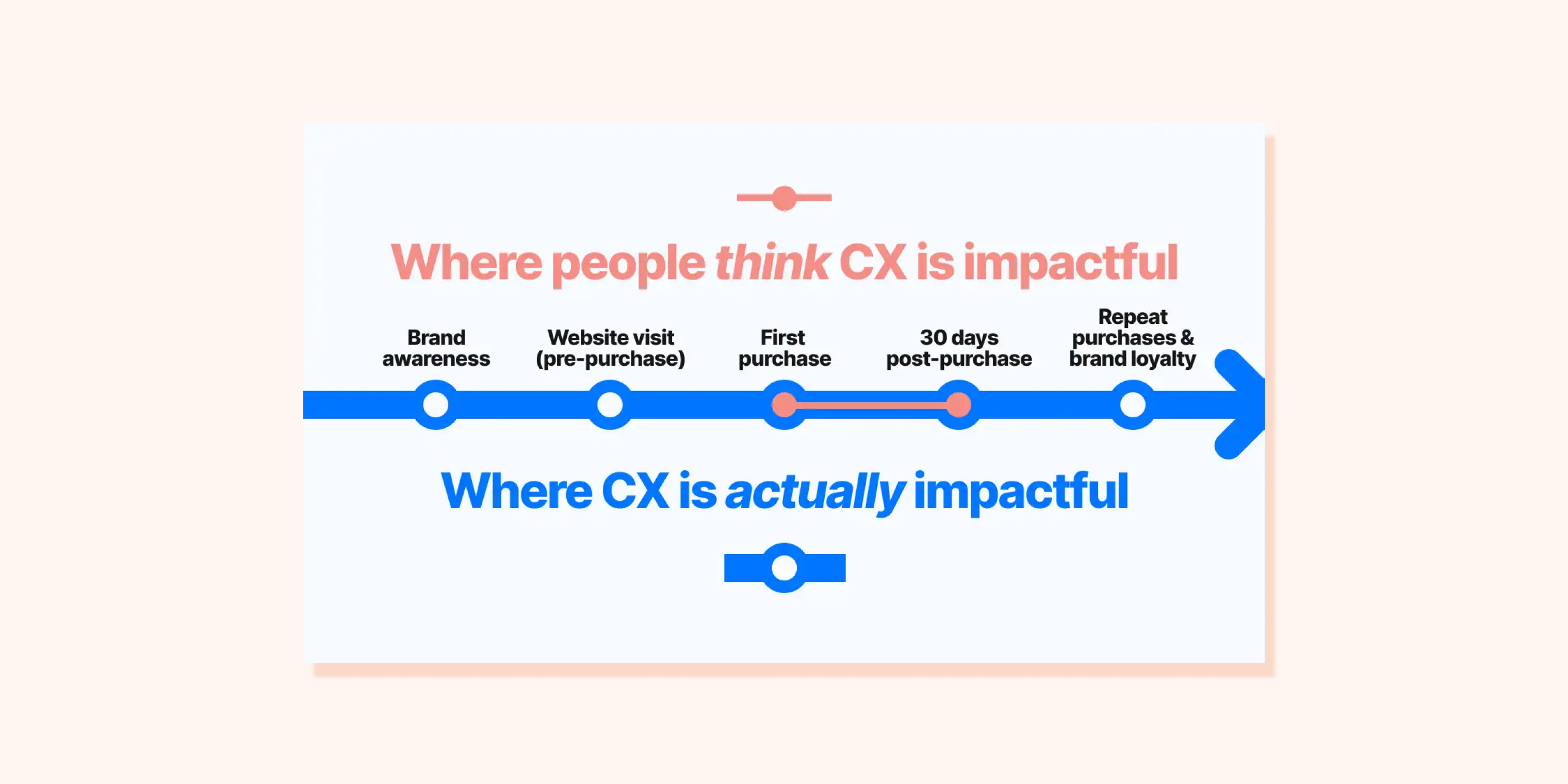
Next, leverage your e-commerce CRM strategy to standardize processes and procedures across your organization. Consistency is key to building trust and loyalty with customers. You create a reliable brand image by ensuring that all customers receive the same high level of service, regardless of the channel or representative they interact with.
Personalization is another crucial aspect of creating a great CX. Most CRM systems offer powerful tools to tailor interactions based on customer preferences, purchase history, and other relevant data. You can increase customer satisfaction and foster long-term loyalty by providing a more customized and relevant experience for each individual.
Effective CRM strategies also enable better collaboration among team members. A centralized platform for sharing customer data, notes, and tasks ensures everyone is on the same page and working towards common goals. This unified approach helps deliver a consistent and seamless CX across all departments.
Combining these e-CRM strategies and techniques allows businesses to create a customer-centric culture that prioritizes exceptional experiences. A well-implemented CRM system serves as the foundation for understanding customers, personalizing interactions, and delivering a consistent, high-quality experience that sets your e-commerce business apart from the competition.
Are you ready to take your e-commerce CRM to the next level? Book a demo with WebEngage today and discover how our powerful platform can help you create exceptional customer experiences, drive engagement, and boost your bottom line.
FAQs
What is a CRM in eCommerce?
In e-commerce, Customer Relationship Management (CRM) refers to a set of tools, strategies, and techniques designed to manage and analyze customer interactions throughout the entire customer lifecycle. An effective CRM strategy enables businesses to track customer behavior, store valuable customer data, segment customers based on various criteria, and personalize marketing efforts to enhance customer satisfaction and loyalty.
Do I need CRM for eCommerce?
Absolutely! Implementing a CRM system is crucial for the success of any e-commerce business. A well-designed CRM helps organize and centralize customer data, streamline communication with customers, improve customer service, and facilitate targeted marketing campaigns. By adopting effective CRM strategies, e-commerce businesses can foster better customer relationships, increase customer retention, and ultimately boost revenue.
What is CRM, in simple words?
CRM, or Customer Relationship Management, is a technology-driven approach that businesses use to manage and analyze interactions with current and potential customers. CRM is essentially the process of gathering and consolidating customer data, discovering customer behavior patterns, and then devising strategies to make customers happy and loyal.
Why is CRM used?
CRM is used to streamline customer interactions, enhance customer satisfaction, and maximize profitability. Businesses can have a complete idea of their customers and make data-driven decisions to improve their products, services, and the whole customer experience by the centralization of customer data and communication channels. Effective e-CRM strategies help businesses identify opportunities for growth, optimize marketing efforts, and foster long-term customer loyalty. Finally, CRM is a powerful instrument that helps companies to create a closer and more profitable relationship with their customers.
This post was originally published on LinkedIn Pulse and is reproduced with permission from the author.
Download Impact Story – Personalize Your Communication For 10x Conversions

































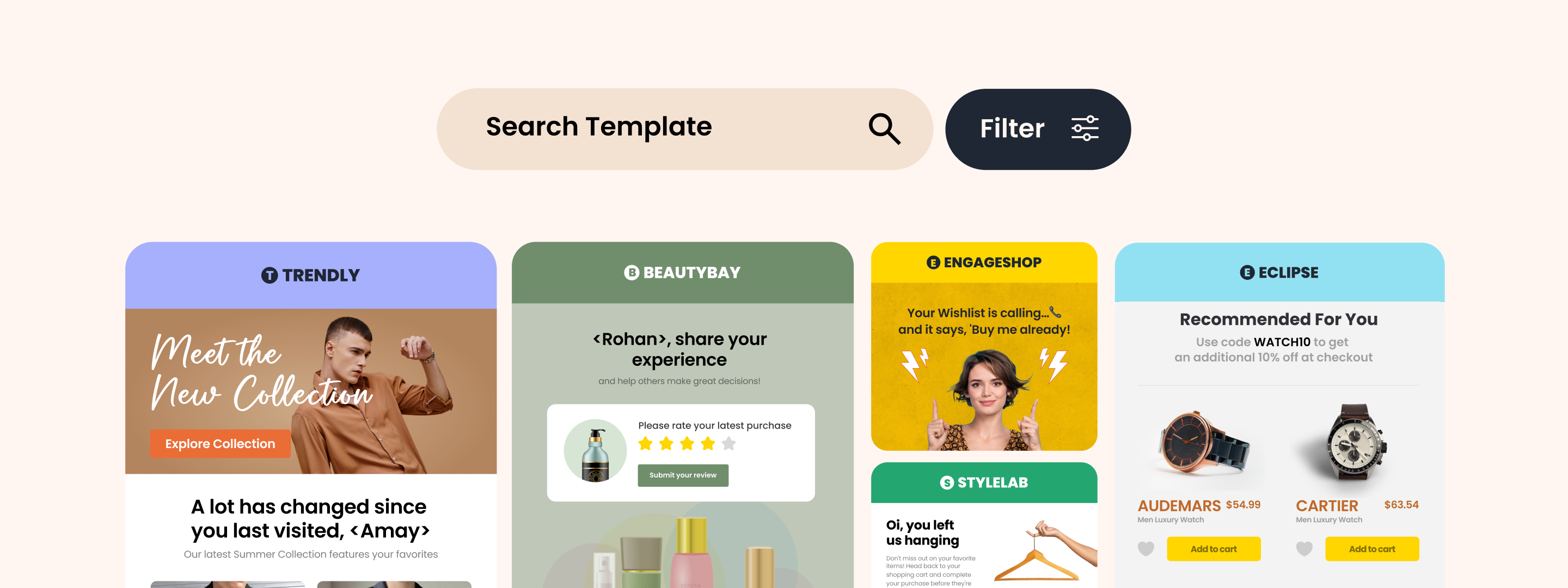
 Harshita Lal
Harshita Lal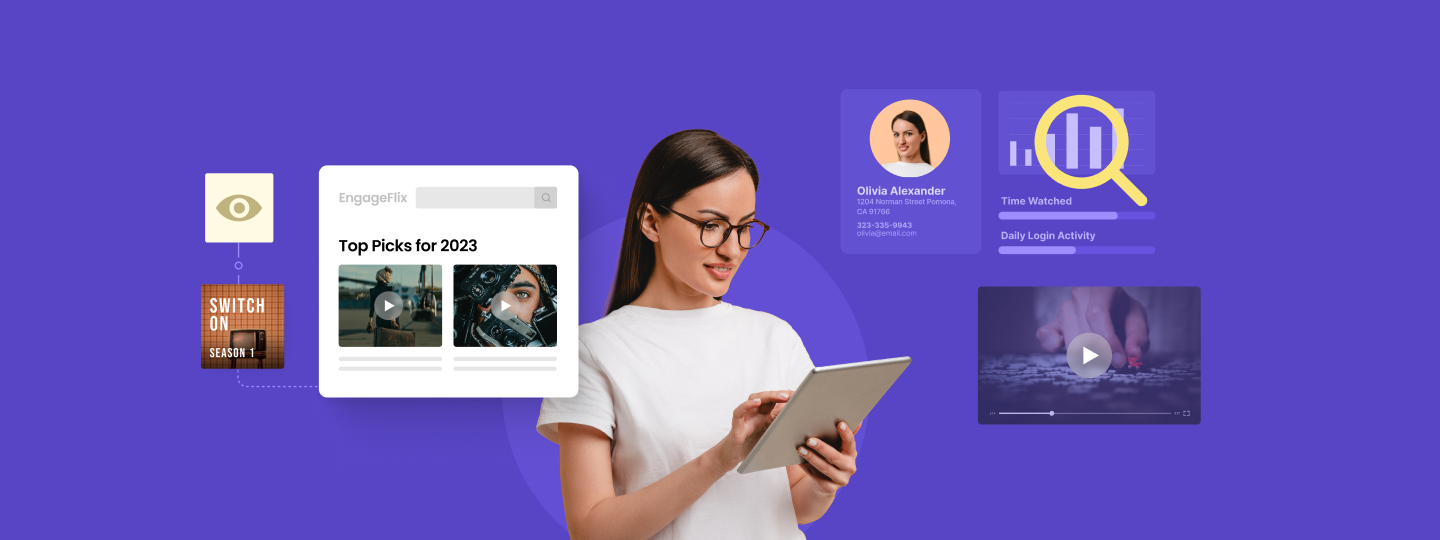
 Diksha Dwivedi
Diksha Dwivedi




